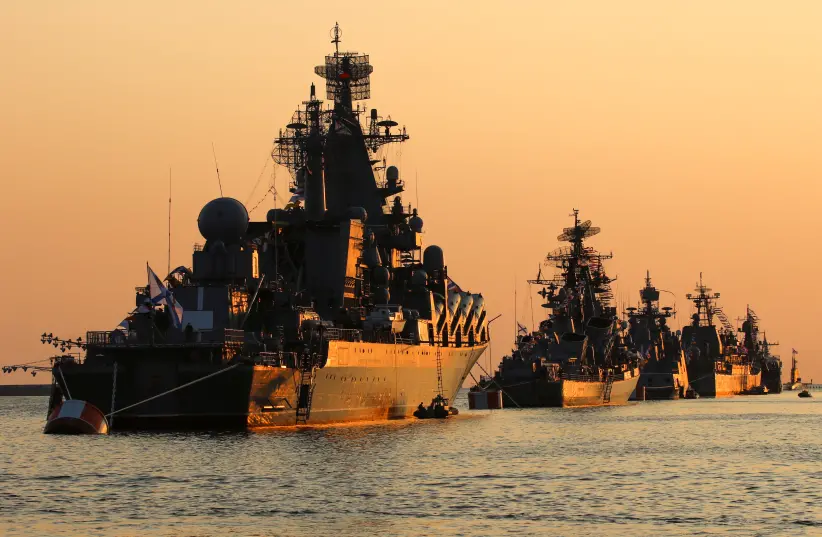
Russia has warned the US and UK not to “tempt fate” in the Black Sea – only one place where there are naval tensions.
On June 21, the US Sixth Fleet announced it would participate in the Sea Breeze exercise that will take place from June 28 to July 10. Washington says that “this year’s iteration has the largest number of participating nations in the exercise’s history, with 32 countries from six continents providing 5,000 troops, 32 ships, 40 aircraft and 18 special operations and dive teams scheduled to participate.”
This is important because it comes days after a UK warship and Russia appeared to clash off the coast of Crimea. Ukraine claims Crimea, but Russia annexed the area in 2014. There have been other tensions between Russia and Ukraine and Russia and the US, increasingly at sea in recent years. Ukraine is fighting a war against Russian-backed separatists in eastern Ukraine. Russia has warned the UK against what it sees as provocations.
This means that this year’s exercise, as large as it is, has more ramifications for the region. The US says that “Ukraine and the US are co-hosting the exercise in the Black Sea with participation and support coming from 32 countries in total: Albania, Australia, Brazil, Bulgaria, Canada, Denmark, Egypt, Estonia, France, Georgia, Greece, Israel, Italy, Japan, Latvia, Lithuania, Moldova, Morocco, Norway, Pakistan, Poland, Romania, Senegal, Spain, South Korea, Sweden, Tunisia, Turkey, Ukraine, United Arab Emirates, United Kingdom and the United States.”
Of interest here is that Israel is participating alongside its new peace partners such as the UAE. In addition, Turkey is participating, despite its tensions with the Jewish state. It is not the first time Israel has participated: the country also took part in 2012.
Another angle that is interesting is the number of ships and the fact that the drill will concentrate on complex operations such as “amphibious warfare, land maneuver warfare, diving operations, maritime interdiction operations, air defense, special operations integration, anti-submarine warfare, and search and rescue operations.”
NAVAL JOINT drills are increasingly important. Israel hosted Noble Dina, a naval drill, back in March. France and Cyprus joined Israel and Greece for the first time. Egypt and Greece have been working more closely together in recent years and the UAE has begun to play a greater role in the Eastern Mediterranean via close work with Greece. Israel and the UAE also participated in the Greek-led Iniochos drill in April. Israel, Italy, the UK and the US also trained with F-35s in Italy earlier this month in a drill called Falcon Strike.
According to Reuters, Russia has warned the US and UK not to “tempt fate” in the Black Sea. The Black Sea is only one place where there are naval tensions. Last year, Turkey threatened Greece repeatedly and the countries came close to possible conflict. The US has expressed support for Greece and Cyprus. However, maritime issues matter because Jerusalem, Athens and Nicosia want to construct an East Med pipeline and are part of a gas forum with Egypt. In addition, Israel received two new Sa’ar 6 advanced corvette warships in the past year. This is important for Israel’s naval footprint and for the wider region.
Last week, British and American F-35B Lighting II Joint Strike Fighters flew anti-ISIS strike missions from the UK Royal Navy aircraft carrier HMS Queen Elizabeth (R08), according to USNI (United States Naval Institute) news. It was “a first for the U.K. in a decade, defense officials confirmed to USNI News on Tuesday.” According to the report, the F-35s from the Royal Air Force were from the 617th Squadron – “The Dambusters” – and they flew anti-ISIS operations.
“The involvement of HMS Queen Elizabeth and her air wing in this campaign also sends a wider message,” Commodore Steve Moorhouse, commander of the UK Carrier Strike Group, said in a statement. “It demonstrates the speed and agility with which a UK-led Carrier Strike Group can inject fifth-generation combat power into any operation, anywhere in the world, thereby offering the British government, and our allies, true military and political choice.”
The Queen Elizabeth Carrier Strike Group left the UK on May 22 and is in the Mediterranean Sea, eventually heading to the Indo-Pacific region. “The [ship] escorts from the Royal Navy include Type 45 destroyers HMS Defender and HMS Diamond, Type 23 anti-submarine frigates HMS Kent and HMS Richmond, the Royal Fleet Auxiliary’s RFA Fort Victoria and RFA Tidespring, and an unspecified Astute-class nuclear attack boat. The group also includes Dutch frigate HNLMS Evertsen (F805) and U.S. Navy destroyer USS The Sullivans (DDG-68),” USNI reports.
It was HMS Defender that ran into tensions with Russia last week. Russian jets and ships have shadowed the British ship. Moscow is now doing drills in the Mediterranean, saying that it does not rule out a “tough response” to the UK. This sets the stage for a week or more of tensions.
